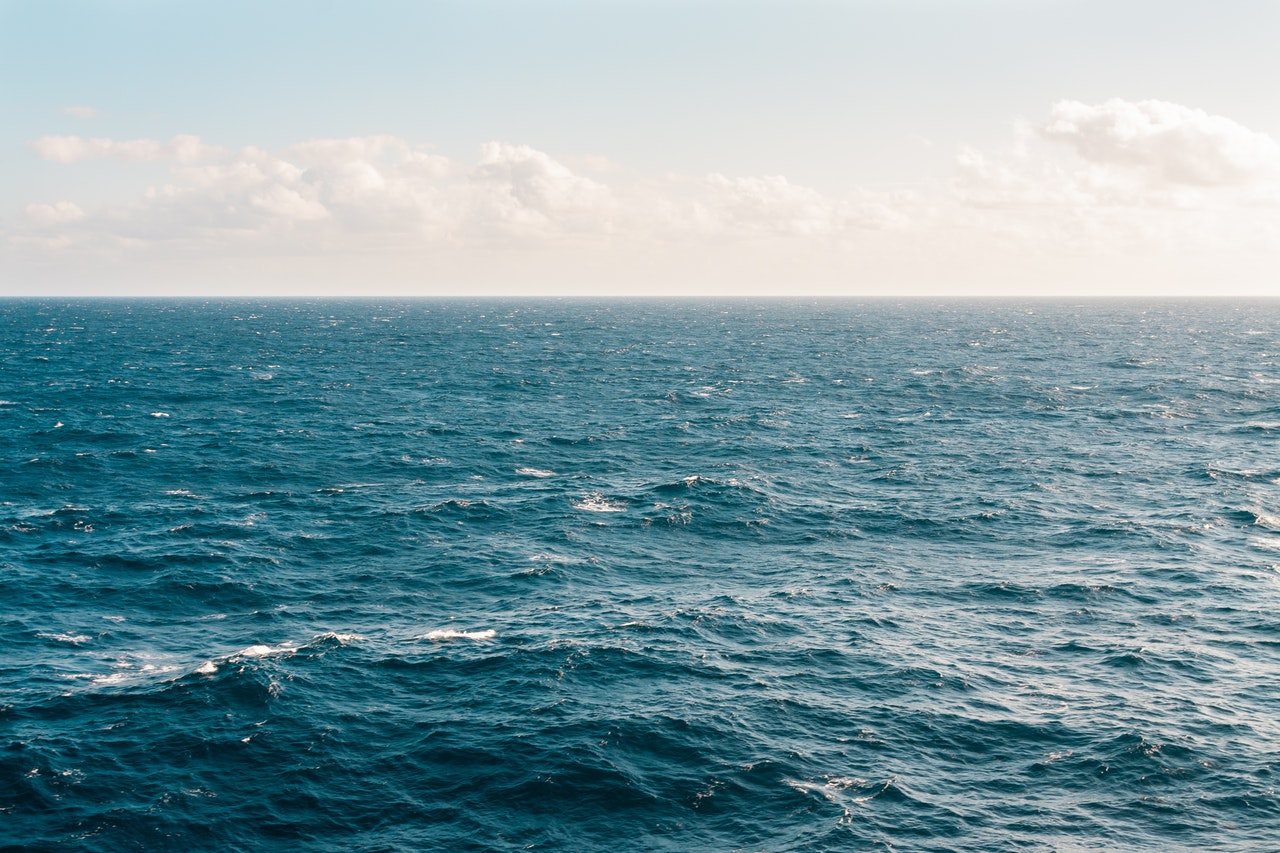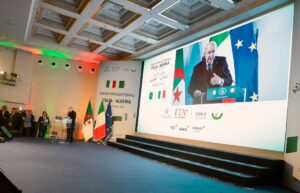SUMMARY AND KEY ELEMENTS
EastMed pipeline: is it really useful for Italy and Europe?
What is it all about?
The EastMed pipeline is a natural gas transportation infrastructure planned by the IGI Poseidon consortium, which would run about 1900 km between Israel, Cyprus and Greece. From there, through the Poseidon extension, it would reach Italy.
The goal: to join the deposits of Israel and Cyprus – and eventually those of Egypt – with Italy.
Why now?
Europe’s need to emancipate itself from gas imports from Moscow – in the wake of Russia’s invasion of Ukraine – , convinced Minister of Ecological Transition Roberto Cingolani to sign a decree extending the authorization to start construction work on the pipeline.
Work is expected to begin by October 1, 2023 and be completed within the next two years.
Numbers and critical issues
- Long timeframe. The construction of EastMed takes at least 4 years. If work starts in 2023, the work will only be fully operational in 2027-2028. Therefore, it will not be useful for reducing dependence on Moscow in the short term.
- Decline in demand. Estimates from the European Union indicate that European countries’ gas consumption is declining rapidly: 40 percent less in 2030 than in 2021.
- Return on investment. Fluctuating fossil fuel prices make it difficult to estimate the return on investment-expected in 15-20 years-and the competitiveness of the infrastructure.
- Environmental impact. Even the most conservative estimates attribute a high climate footprint to the EastMed pipeline.
- Geopolitics. Regional tensions and rivalries risk undermining the stability of an already fragile geopolitical quadrant.
In contrast, an interconnection between Europe and the Mediterranean that is in line with climate goals is electricity interconnections.
Advantages:
- They do not create fossil fuel-based links.
- They prepare the Euro-Mediterranean region for a future of electricity generated from renewable sources.
- Greater balance in relations between Europe and the Mediterranean
- Advantage over their competitors (primarily China) in setting technology standards, on which the real global geopolitical game is played.
The Mediterranean can become the new hub for European energy security. A clean energy hub and model for an orderly and just transition of all Mediterranean economies toward decarbonization.
FULL TEXT.
The discovery of natural gas deposits in the Eastern Mediterranean over the past decade has led to a search for ways to transport that gas to Europe. The EastMed pipeline, first included in Europe’s Projects of Common Interest (PCIs) in 2013, would run along a route of about 1,900 kilometers, partly offshore and partly onshore, joining Israel’s offshore fields – via Cyprus – to the coast of southeastern Greece, then continuing onshore to western Greece and, from there, via the Poseidon offshore connection, landing in Puglia, in Otranto. The EastMed pipeline alone (without the Poseidon connection) would have an estimated starting cost of 6 billion euros and an annual capacity of 10 bcm, expandable to 20 bcm in the future. The Poseidon offshore pipeline would then join the Greek and Italian coasts, with a length of 216 km and a capacity of 15 bcm. Owner of both projects is IGI Poseidon S.A., a joint venture between Greece’s Public Gas Corporation DEPA and Edison, an Italian company controlled by France’s Électricité de France group. Between 2019 and 2020, Greece, Cyprus and Israel signed agreements to kick off the project, backed by the Trump administration in the name of supply diversification and the strong closeness between the then U.S. president and the Israeli government of Benjamin Netanyahu. Despite this, the project has struggled to get off the ground mainly because of its poor economic viability. The decidedly high expense and technical difficulties of building a pipeline on a very deep seabed with complex geological conformation would not have been repaid by the modest quantities of gas currently available and especially by a European demand already largely satisfied by Russian supplies and other infrastructure.
Moreover, exploration activities in the region have rekindled unresolved tensions between the countries involved in the project and Turkey, with the risk of a wider conflict in the Mediterranean originating from territorial claims. Nevertheless, in November 2021 EastMed and Poseidon were included again in the European list of PCIs as part of the Southern Gas Corridor, thus becoming eligible for European public funds. In January 2022, the United States withdrew its political support for the project, deemed by Washington to be inconsistent with climate decarbonization goals and a harbinger of regional instability, due to tensions between the countries involved in the project and Turkey. A decision reiterated in April, when Washington affirmed its preference toward electric interconnection projects that would support both gas and renewables.
Russia’s aggression of Ukraine and the need for European countries to reduce their dependence on gas imports from Moscow have turned the spotlight back on the EastMed pipeline. According to proponents of the project, the construction of the infrastructure would become economically advantageous today due to high gas prices, while geopolitically it would meet the need to reduce dependence on Russia. On the contrary, it would allow a reorientation of European energy balances towards South, with a growing role of Italy, Greece, Cyprus as the new European energy hub thus replacing Germany.
In March, the Italian Minister of Ecological Transition Roberto Cingolani signed a decree extending the authorization to start construction work for the Poseidon pipeline. According to the decree, in order for the permit to remain valid, works would have to begin by Oct. 1, 2023, and be completed within the next two years.
To assess the desirability – or the lack of it – of the project, and more generally to identify what kind of interventions are needed today to respond to the emergency, several elements need to be considered. Above all, it is necessary to look not only at the current situation but at future scenarios, cross-referencing data on project construction and implementation times, and projections of European and Italian gas demand.
With regard to the first datum, it is estimated that the construction of EastMed will take at least 4 years and have a payback period of 15-20 years. Thus, it will not come online before 2027 and will need to run at least until 2047 to remain economically viable.
As for gas demand projections, two factors must be taken into account: trends in gas demand and the amount of gas that can be saved through interventions on savings, energy efficiency and speeding up renewables.
The REPowerEU plan includes an ambitious package of measures that would result in an outright reduction in dependence on natural gas, not just Russian gas. The European goal is a reduction of its dependency on Russia “well before” 2030. The measures of the Green Deal, Fit for 55, and REPowerEU combined would result in a 40 percent reduction in European gas demand in 2030 compared to 2021. By 2030, the need to offset supplies from Russia will therefore be eliminated. According to EU directives, this will be achieved through acceleration of renewables, action on energy efficiency, and development of hydrogen and biogas. Looking at the specific case of Italy, ECCO analyses show that through actions on savings, energy efficiency and renewables it is possible to substitute up to 50 percent of Russian gas in one year. Even without counting savings measures, a push on energy efficiency and renewables, in line with the Fit for 55 package and electricity industry estimates, could replace up to more than 80 percent of Russian gas by 2025.
Looking at gas demand in Italy, the downward trend is already strongly visible. After peaking in 2005, gas demand fell by 14 percent due to energy efficiency measures, renewables and the impact of successive economic crises. As for future projections, the 2019 PNIEC (National Integrated Plan on Energy and Climate) estimates gas demand in Italy to fall by more than 12 percent in 2030 compared to 2020, with net imports falling by 9 percent. But these projections – while already envisaging a reduction in demand – do not take into account the new national and European targets set from late 2019 to the present. In particular, with the 2022 Plan for Ecological Transition (PTE), the 2030 national target for renewables penetration in the electricity system increases from 55 percent in the PNIEC to 72 percent. Moreover, with the Fit for 55 package the EU emissions reduction target increases from 40% to at least 55% by 2030. And as said above, with the new REPowerEU plan, efficiency and renewable targets will be further revised upward.
The main implication of the projected sharp decline in gas demand is the loss of future economic viability of any new gas infrastructure. Conversely, new investment in the sector risks of either creating stranded assets or trapping citizens and businesses in long-term contracts well beyond 2030.
While it is true that in the very short term alternative supplies must be found in order to get rid of Russian gas as soon as possible, this can be achieved by increasing flows via existing pipelines and through LNG, which provides greater flexibility.
Building new gas infrastructure such as the EastMed-Poseidon pipeline does not correspond to any need to reduce dependence on Russia in the short term, as the pipeline will not be ready before 2027. Then considering the payback time, estimated to be 15-20 years, we can see that it matches the European timeline for achieving climate neutrality. Unless the project is carbon-neutral, it will either have to be decommissioned soon, or it will derail the EU climate goals.
From a climate perspective, even the most conservative estimates attribute a high climate footprint to the EastMed pipeline: the gas transported in one year would be responsible for 38 million tons of carbon dioxide emissions, and for a methane leakage (a gas with a greenhouse effect 72 greater than carbon dioxide) of 365 tons per year. In one year, EastMed would thus be responsible for more emissions than the coal-fired plant in Bełchatów, Poland, currently responsible for the highest level of emissions in Europe.
Another element to be taken into account is the trend in gas demand in exporting countries: in both Israel and Egypt, gas demand is on the rise, thus raising questions about their to make up for both domestic and European demand.
Last but not least is the geopolitical dimension. The start of exploration activities in the region has led Turkey to formulate territorial claims in disputed maritime areas and, more importantly, to claim a role in the management of regional energy resources. The creation in 2019 of the East Mediterranean Gas Forum, which brings together all countries in the region except Turkey, only exacerbated Turkish perceptions of isolation, leading Ankara to aggressive maneuvers in Aegean waters. Tensions have since subsided with the momentary pandemic-imposed halt to exploration activities, demonstrating that disputes over hydrocarbon management is one of the main factors behind regional geopolitical tensions and rivalries. The outbreak of the war in Ukraine has led Turkey to reclaim a role as a mediator in the crisis, thus increasing its regional standing. At the same time, the economic difficulties plaguing Turkey led Ankara to seek regional dialogue with actors such as Egypt, Israel, the United Arab Emirates, and Saudi Arabia after years of tensions. Nevertheless, the dispute over Cyprus, through whose territorial waters the EastMed gas pipeline is supposed to transit, remains open and seemingly unresolved.
The analysis of the geopolitical dimension, as well as trends in energy demand and climate goals, leads us to formulate a different proposal for the interconnection between Europe and the Mediterranean:the electricity interconnection represented by the Euro-Asia Interconnector and Euro-Africa Interconnector projects. Unlike pipelines, interconnection through electricity grids has several advantages: while in the short term it may provide room for the exchange of electricity generated from natural gas, it does not bind the countries of the region and Europe to this fossil fuel; rather, it prepares for the Euro-Mediterranean region a future of electricity generated from renewable sources. Moreover, although they constitute a physical infrastructure, the dependency relationship would not be unbalanced in favor of the producing countries, as in the case of gas pipelines. On the contrary, connecting electricity grids would give the EU an advantage over its competitors (primarily China) in setting technological standards, which is key to this decade geopolitical game.. The Mediterranean can thus become the new hub for European energy security, not as a hub of new dependence on fossil fuels but as a hub of clean energy and just transition… The opportunity for Italy and other southern European countries to gain a new leadership role lies in the ability to get rid of old dependency schemes linked to fossil fuels and to develop a new vision, positioning itself as a leader of the clean energy systems of the future, in line with climate goals.






